what are the top 5 infectious diseases today compared to 60 years ago?
A new outbreak of cholera, a bacterial infection contracted through the consumption of contaminated food and water, begins in India at the plough of the century. Information technology's the latest moving ridge of a disease that has caused pandemics intermittently since the early 1800s. The outbreak spreads to Russia, as well as to parts of the Middle East and North Africa, ultimately killing hundreds of thousands of people—with particularly high death tolls in Republic of india and Russia. Advancements in sanitation and public hygiene are credited with preventing the pandemic from taking concur in Europe and Northward America.
Spanish Influenza Engulfs the Globe
A new influenza virus begins to spread worldwide amid the upheavals of World War I. In that location is no consensus on the origin of the pandemic, but information technology is showtime publicly reported in Spain. It infects an estimated 5 hundred million people, roughly one-third of the world'due south population at the fourth dimension, and kills some fifty million, with an unusually loftier fatality charge per unit amongst otherwise healthy young adults. Many governments look to isolation measures, quarantines, and disinfecting efforts, but the global motility of troops hinders containment. At the fourth dimension, there is no flu vaccine and antibiotics have non yet been developed to treat secondary bacterial infections. In the United States alone, near 675,000 people die, lowering the country's average life expectancy by more than twelve years.
Penicillin Ushers in Antibiotics Era
Scottish scientist Alexander Fleming discovers penicillin, the first antibiotic—a course of drugs used to treat bacterial infections—marking a major milestone for global health. Widespread utilize of antibiotics takes off in the early on 1940s during World War Ii. They presently get the go-to handling for common illnesses, such as strep pharynx and urinary tract infections, and significantly reduce the death rates for many ailments, including syphilis and tuberculosis.
The World Wellness Organization's (WHO) constitution, signed by more lx countries, enters into strength in Apr 1948. The body, a role of the newly formed United Nations, sets out to coordinate international health policy, seeking to gainsay diseases such every bit malaria and tuberculosis and better sanitation practices. The WHO builds on previous agencies including the League of Nations' Health Organization (1920–1948), as well as before initiatives such as the International Sanitary Conferences, the Pan American Health Organization, and the International Role of Public Hygiene, which outset in the nineteenth century issued regulations to improve health standards and prevent the spread of diseases such as cholera and yellow fever.
A new strain of flu virus, designated H2N2, is reported in Singapore in February 1957, and soon spreads to China, Hong Kong, the United Kingdom, and the The states. Though less severe than the Spanish Flu, the Asian Flu kills more than one million people worldwide. A second wave of cases beginning at the cease of that year is particularly deadly, and young children, elderly people, and pregnant women are hardest hit. A vaccine is quickly developed in 1957, but its deployment is limited and it does little to mitigate the outbreak, experts later say.
A cholera pandemic originating in Indonesia spreads to other parts of Asia, the Heart East, and Africa over the course of a decade, and continues to this day. Past the 1990s outbreaks also take hold in Due south America, the starting time on that continent in virtually a century. An outbreak in Zimbabwe in 2008–09 kills more than four 1000 people, and major outbreaks in Haiti and Yemen each touch on more than a one-half 1000000 people. Some three one thousand thousand people are infected with the bacteria that cause cholera each year, and it remains owned in shut to l countries. Health experts say oral cholera vaccines, introduced in the 1990s, are not a replacement for improved sanitation.
A decade later on the Asian Flu, a new strain called H3N2 emerges. Ordinarily called the Hong Kong Influenza, it emerges commencement in Hong Kong, then a British colony, in July 1968. Information technology soon travels across E and South asia, then to Commonwealth of australia, Europe, and North America, and on to Africa and South America by 1969. U.Due south. troops returning from the Vietnam War are believed to have brought the virus to the U.s.. An estimated one million people die in the pandemic, about one-half of them Hong Kongers and many of them people 60-v years of historic period or older. Descendants of the H3N2 virus continue to circulate seasonally worldwide.
The concluding known case of smallpox, a viral disease that plagued humans for millennia, is diagnosed in 1977 in Somalia, following a well-nigh two-decade-long global vaccination campaign. Three years later the WHO formally declares it eradicated around the world. The elimination of the disease, which was fatal in as many as i-third of patients, marks unusual U.Due south.-Soviet cooperation during the Common cold War. It too highlights major advancements in the study and use of vaccines: polio vaccines introduced in the 1950s and 1960s lead to similar success globally, and vaccines are credited with reducing rates of illnesses such every bit measles, diphtheria, and whooping coughing to all-time lows.
A 1981 written report by what is now the U.S. Centers for Disease Control and Prevention (CDC) describes a rare grade of pneumonia that is afterward identified every bit Acquired Immunodeficiency Syndrome, or AIDS. Information technology is the most advanced phase of Human being Immunodeficiency Virus (HIV). This marks the start of an explosive growth of cases, and by the early 1990s AIDS becomes the leading cause of expiry in men between the ages of twenty-five and forty-4 in the United States. In 1996, the Un establishes UNAIDS to coordinate global action. The introduction of antiretroviral therapy helps to bring down the U.S. death toll, but the epidemic grows across Africa. The 2003 U.South. President's Emergency Plan for AIDS Relief (PEPFAR) boosts international funding, and between 2000 and 2018 HIV-related deaths decrease by 45 percent. Today, close to 40 million people take HIV/AIDS, more than two-thirds of whom are in sub-Saharan Africa. Tens of millions of people have died from the disease.
The Astringent Astute Respiratory Syndrome (SARS) coronavirus, part of a family of viruses that commonly cause respiratory symptoms such equally coughing and shortness of breath, is get-go identified in late 2002 in southern China. SARS spreads to more than than two dozen countries across four continents, infecting more than eight yard people. In March 2003, the WHO triggers its Global Outbreak Alert and Response Network (GOARN) to coordinate research by teams of international experts and the deployment of supplies and health workers to affected countries. Wellness experts sharply criticize Beijing for covering up the initial spread of the virus. SARS kills shut to eight hundred, about inside Mainland china and Hong Kong, by the fourth dimension the outbreak is quelled in mid-2003. The virus is idea to have been transmitted to humans via contact with civet cats.
The WHO rewrites its International Health Regulations, rules originally drawn up in 1969 that are binding on all WHO member states. The new rules aim to boost collective defenses confronting global health challenges and improve pandemic preparedness and response. Entering into forcefulness in June 2007, they require states to notify the WHO of potential global health emergencies. They as well grant the WHO director-general the say-so to declare a public health emergency of international business organisation, or PHEIC, in guild to mobilize a global response. The changes are meant to build on the GOARN established in 2000.
U.South. at Center of H1N1 Pandemic
A new influenza virus, labeled H1N1 and commonly referred to as the swine flu because of its links to influenza viruses that circulate in pigs, begins to spread in early 2009 in Mexico and the United States. Different other strains of influenza, H1N1 disproportionately affects children and younger people. The CDC calls it the "first global influenza pandemic in forty years." The WHO declares a PHEIC in April 2009, then designates the spread of H1N1 a pandemic in June, after the virus reaches more than than seventy countries. In response, some countries advise against travel to North America, and Communist china imposes mandatory quarantines for patients and their close contacts. The CDC estimates that between 151,700 and 575,400 people die worldwide—around 12,500 in the Usa—in the first year afterwards the virus is discovered. Effectually lxxx per centum of those who die are younger than sixty-five. The WHO announces the pandemic's finish in Baronial 2010, though the strain continues to broadcast seasonally.
MERS Uncovered in Middle East
A new coronavirus, named Middle East Respiratory Syndrome (MERS), is transmitted to humans from camels in 2012 in Saudi Arabia. The largest outbreak occurs on the Arabian Peninsula in the first half of 2014, with the Saudi metropolis of Jeddah equally its epicenter. In 2015, Due south Korea is abode to the second-largest outbreak. More than two dozen countries written report cases of the viral respiratory disease in the following years, though the majority of cases are in Kingdom of saudi arabia. The virus usually causes pneumonia in those infected and has a relatively high fatality rate: of the roughly two,500 people diagnosed with MERS since its discovery, more 850 have died from the disease.
Uptick in Polio Prompts WHO Emergency
In May 2014, WHO Director-Full general Margaret Chan declares a PHEIC over a rising in polio cases in Africa and Asia. The virus, which paralyzed or killed a half million people yearly at its peak in the early 1950s, had been nearly eradicated after mass vaccination campaigns starting in the late 1950s. The affliction, which disproportionately affects young people, proves hard to eliminate completely, peculiarly in conflict zones. Widespread mistrust of vaccination programs is a major challenge. As of early 2020, the PHEIC over the possible spread of polio remains in place, and the illness is all the same endemic in three countries: Transitional islamic state of afghanistan, Nigeria, and Pakistan.
In early 2014, cases of the Ebola virus, a rare and astringent communicable diseases that leads to death in roughly one-half of those who contract it, are detected in Guinea and soon after in Liberia and Sierra Leone. It is the first time the disease moves into densely populated urban areas, allowing for rapid transmission. The outbreak somewhen spreads to seven other countries, including several European states and the United States, causing more than eleven thousand deaths in all. Mistrust of wellness workers and rumors again present challenges to containment. The WHO, which declares the outbreak a PHEIC in Baronial 2014, is criticized for what many call a slow response. In September 2014, the Un Security Council adopts a resolution calling on member states to pool global resources to combat the crunch, and countries including the United States and United Kingdom deploy health workers and other aid. The hardest-hit countries declare themselves Ebola-free in June 2016.
Fight Confronting Musquito-Borne Diseases Continues
The WHO reports in 2015 that malaria infections are down past more than than one-third globally compared to 2000, every bit the United Nations and the Bill & Melinda Gates Foundation launch a major articulation attempt to eradicate the disease by 2040. Malaria still kills several hundred thousand people yearly, 2-thirds of whom are children under v. Eradication efforts focus on the 11 countries where the large bulk of malaria cases occur, all of which are in sub-Saharan Africa except for India. Meanwhile, cases of dengue, another musquito-borne disease, fasten between 2000 and 2015, partly due to increased reporting. Dengue is endemic in more than a hundred countries, with the majority of the 100–400 million yearly cases occurring in Asia. These diseases have proven difficult to eliminate, as researchers confront numerous challenges to developing successful vaccines.
Zika Spreads Across Americas
An outbreak of the Zika virus, get-go discovered in Uganda in the 1940s and transmitted mainly by mosquitoes, takes off in Brazil in early on 2015. In Feb 2016, the WHO declares the outbreak a PHEIC, and by the middle of the year more than 60 countries report cases of the virus, including the United States. Thousands of women infected with the virus while pregnant requite birth to babies with microcephaly, a condition in which a child'due south head is smaller than normal, and other congenital weather condition. Some governments urge women to delay pregnancy amidst the outbreak. Despite calls for cancellation, the 2016 Summertime Olympics in Rio de Janeiro go ahead as planned. The WHO declares the stop of the epidemic in Nov 2016.
Ebola Returns in Conflict-Stricken Congo
In August 2018, the Democratic Republic of Congo (DRC) declares an outbreak of the Ebola virus in the country's northeast. Several cases are afterward reported across the border in Republic of uganda. Protracted conflict in the area hampers the response, as health workers face up attacks by armed groups; misinformation and mistrust amongst the local population are also challenges. By June 2019, the Ebola outbreak becomes the second largest in history, and in July the WHO declares a PHEIC, urging increased international support to end the crunch. More than 3,400 people are infected with the virus, and close to 2,300 die. In June 2020, nearly 2 years after the outbreak'south starting time, the WHO declares it over. Withal, new cases emerge afterward in the DRC and in Guinea, prompting international efforts to try to prevent the virus from spreading.
A new coronavirus emerges in China's Hubei Province in late 2019, spreading rapidly to other parts of China. The virus presently travels throughout the rest of the world, and in March 2020, the WHO designates the outbreak a PHEIC. Many governments impose restrictions to try to stop its spread, including lockdowns, mandates to habiliment face masks, limits on large gatherings, and quarantines for people who are infected. After ii years, the official decease toll from the COVID-xix disease surpasses half-dozen 1000000 people, though the actual number is believed to exist much college. The economic decline is described as the worst since the Cracking Depression, with supply-chain and labor-force disruptions reverberating worldwide. At the aforementioned time, the world marks the fastest-ever development of rubber and effective vaccines. Notwithstanding, uneven vaccine distribution and the emergence of more dangerous variants frustrate global efforts to end the pandemic.
Source: https://www.cfr.org/timeline/major-epidemics-modern-era

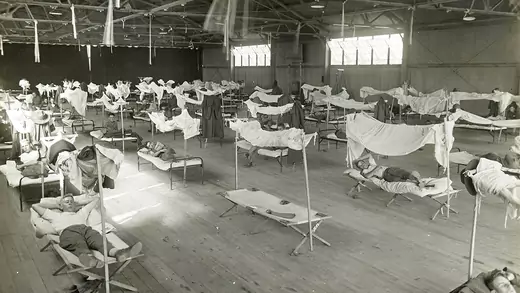

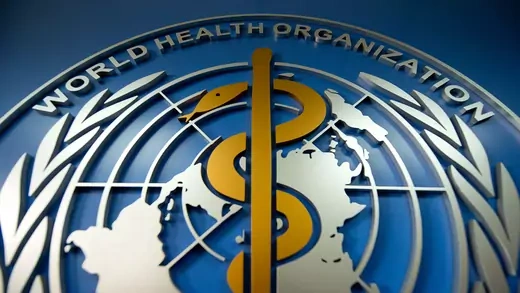

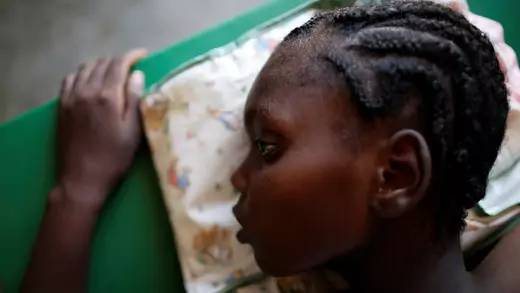




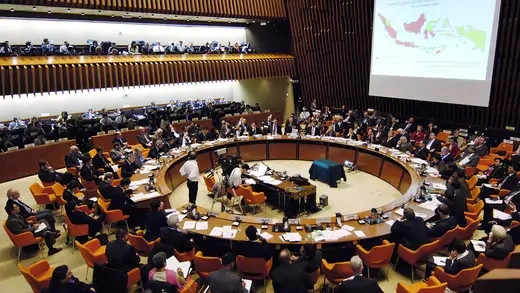
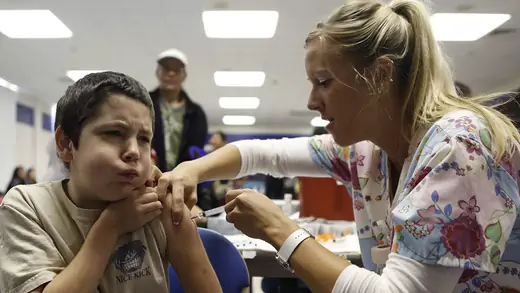


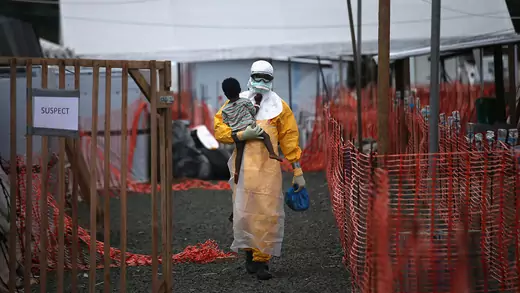


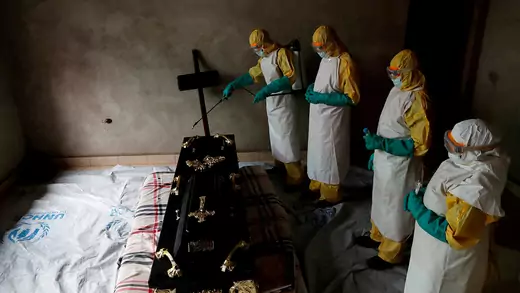

0 Response to "what are the top 5 infectious diseases today compared to 60 years ago?"
Post a Comment